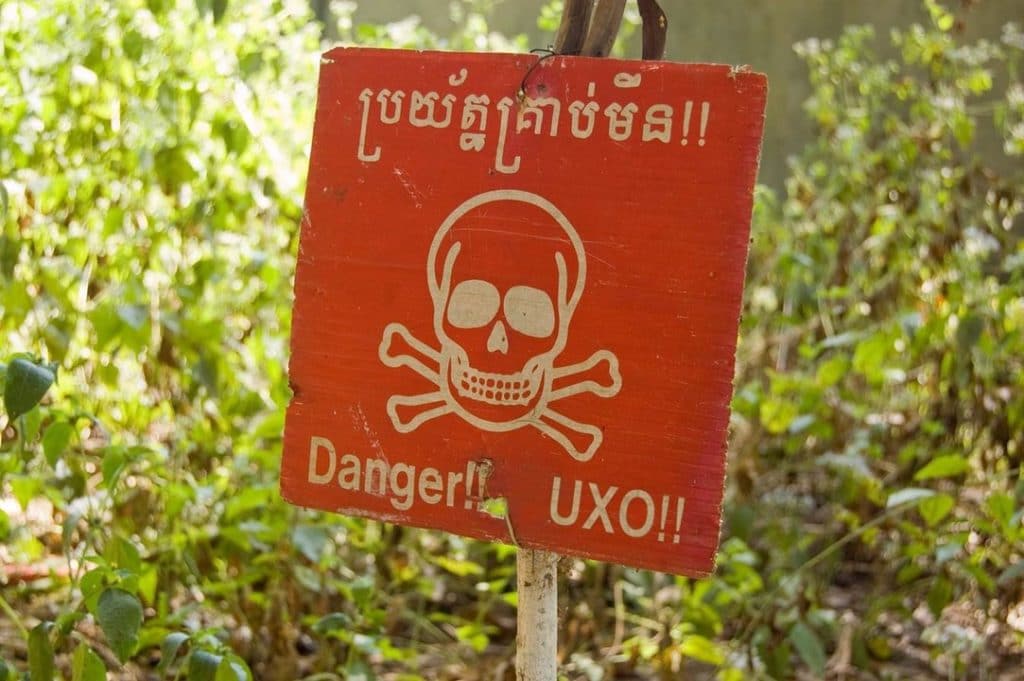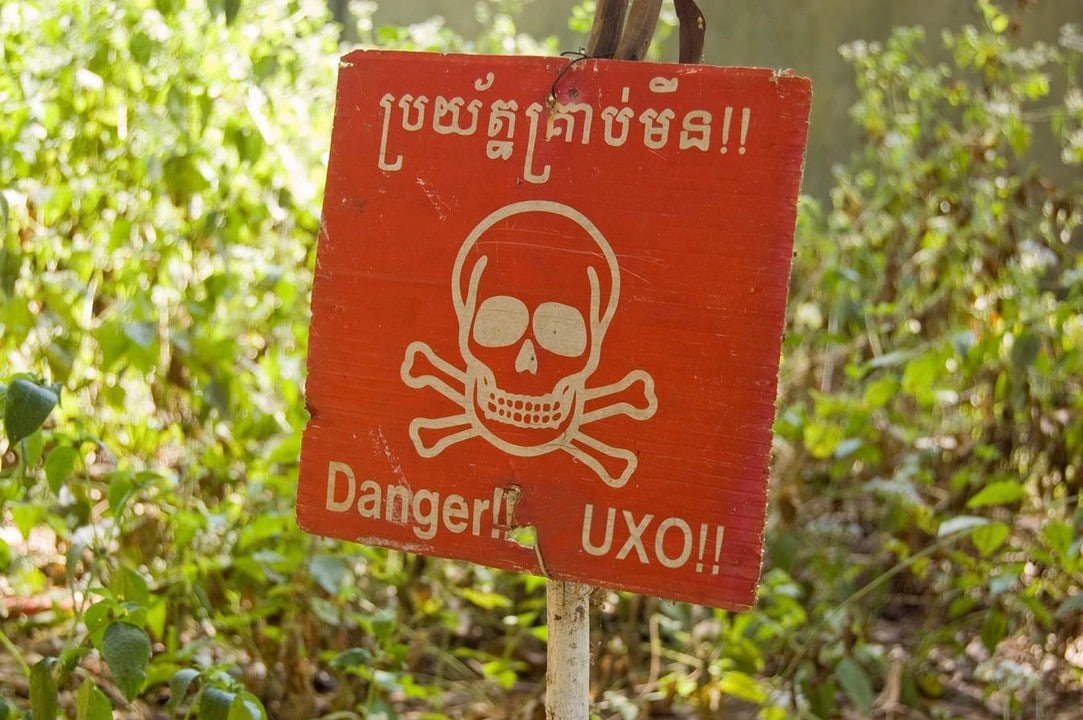Unexploded ordnance (UXO) represents a distinguished threat in many war-torn countries. Despite progress at the turn of the century, including promises to discontinue anti-personnel mines internationally[1] [2] , other remnants of war continue to pose significant daily threats to civilian populations. Because of these dangers, contaminated land must be remediated before it can be used for agricultural, infrastructure, or socioeconomic development. Geoscientists must also neutralize and rehabilitate geographic locations used by military operations for training, amplifying the need for UXO detection and cleanup. But just how big of a problem is UXO worldwide?

The ongoing threat
UXO exists in more than 80 countries and dates back to conflicts as early as the Civil War. These threats remain for years without intervention, forcing humanitarian and other rehabilitation efforts to modify plans or cease completely, thereby isolating large at-risk populations. Sites with UXO exist all over the world, inside and in between populated areas, and the scale of affected land is staggering.
According to Ariel Garfinkel writing for The New York Times, “Estimates are that at least 350,000 tons of live bombs and mines remain in Vietnam, and that it will take 300 years to clear them from the Vietnamese landscape at the current rate.”
In many other areas, anti-vehicle mines present ready threats to larger populations and damage infrastructure by obstructing or destroying roadways used to deliver essential supplies and medical treatment after conflicts have passed.
In addition to these dangers, the work of demining land itself is dangerous and painstaking. Efforts in Cambodia are one example of using cutting-edge technology to make remediation safer and more accurate. Fatalities are declining “as the government has overseen the removal of more than 1 million anti-personnel mines and 2 million other explosives.”
Time and technology
As time progresses, older UXO becomes more difficult to identify. Cambodian farmers going about their trade can easily encounter UXO — even decades after active war. In Vietnam, rice paddies are no safer, according to The New York Times article. In Laos, a burst dam in July 2018 released an “unknown amount of unexploded ordnance” from the Vietnam War, threatening populations all the way into Cambodia.
It’s a challenge to detect these risks as procedures are complex and can be costly. Traditional methods of UXO detection involve using analogue metal detectors in a method sometimes referred to as “mag and flag,” covering territory likely to contain dangerous hazards. The efficacy of these methods depends on the operator’s experience level; targets are often missed. But better methods of UXO detection and remediation exist — and don’t involve such risks to life.
While the only 100% effective method to remove UXO would be to safely sift the soil at each site, an impractical and impossible solution, modern methods exist. The U.S. Army Corps of Engineers (USACE) employs leading-edge software and geophysical techniques to detect UXO. These newer methods come at a lower cost, with higher degrees of accuracy, and with better results overall. So why are some remediation teams still risking lives in the field through older methods?
Education and financial resources are the two most significant barriers to adopting geoscientific methods of UXO detection and remediation. Longer-term strategies are necessary to employ safer, newer detection methods.
In partnership with the USACE, the Environmental Security Technology Certification Program (ESTCP), and leading technology researchers such as Acorn Science & Innovation Inc. (AcornSI), Geosoft has developed the world’s most complete software solution for UXO detection and classification. Using Geosoft’s advanced geophysical analysis and subsurface mapping software, UXO detection is less expensive, more accurate, and safer for field workers dealing with sensitive materials. Extensive planning supports feasible resource management.





